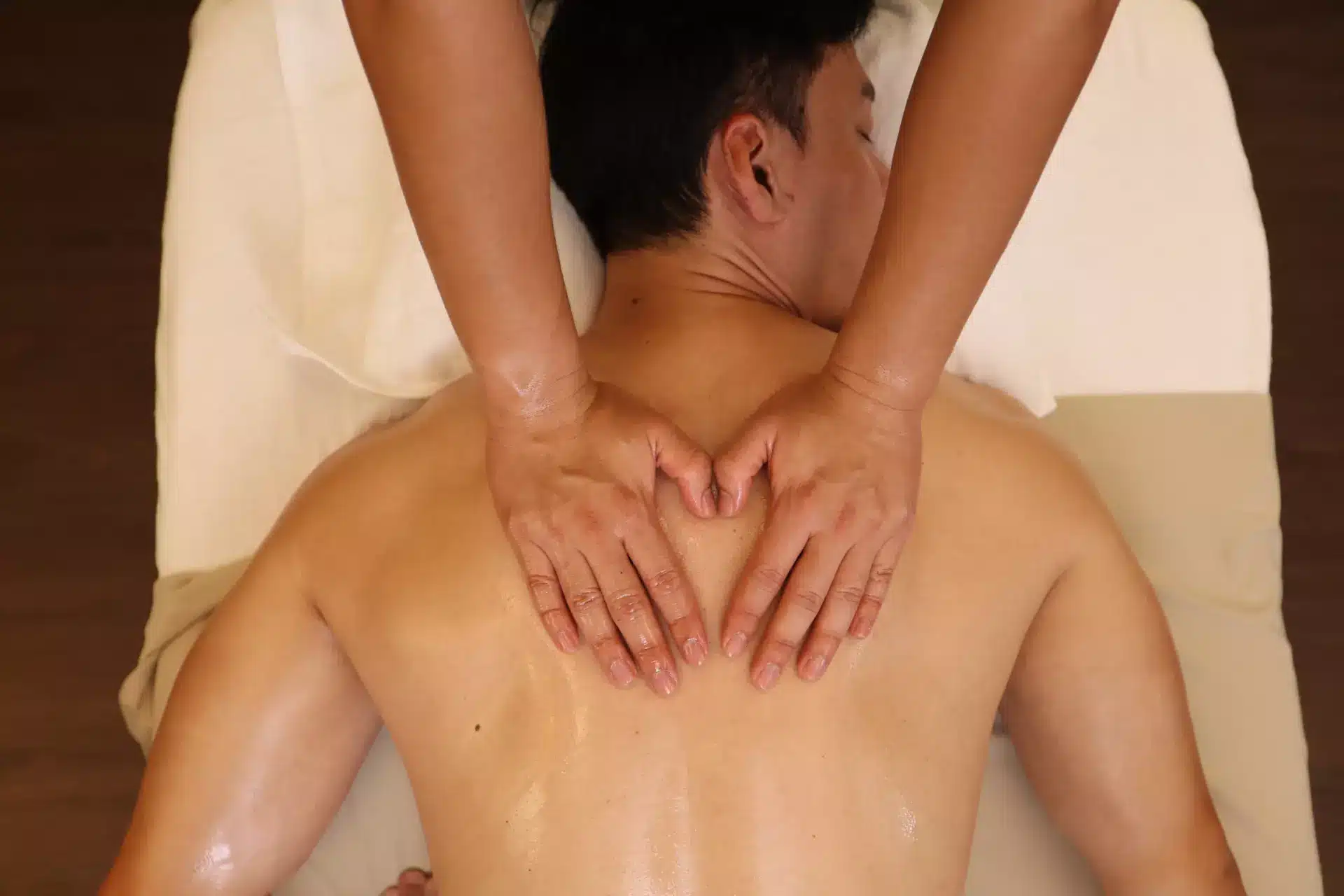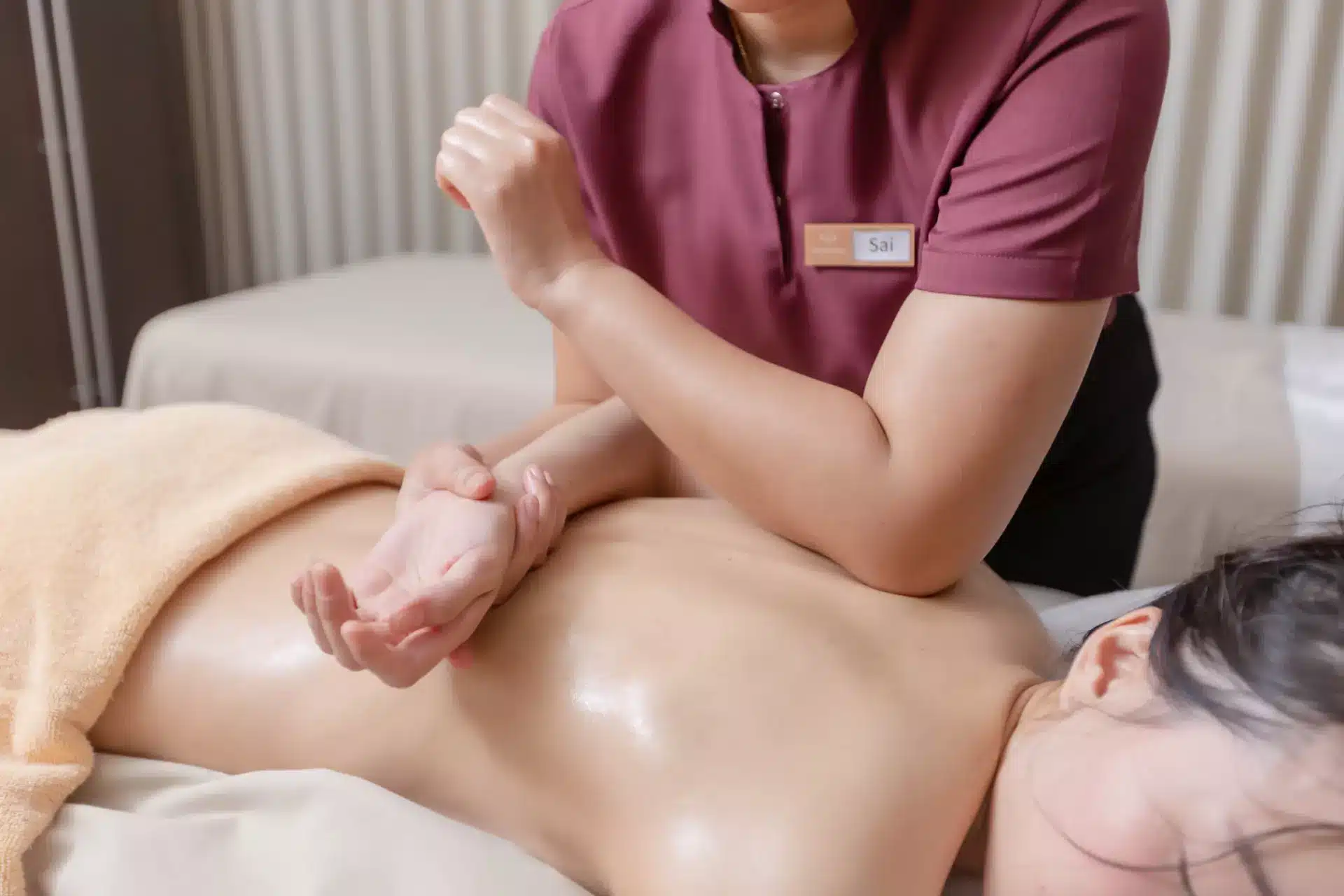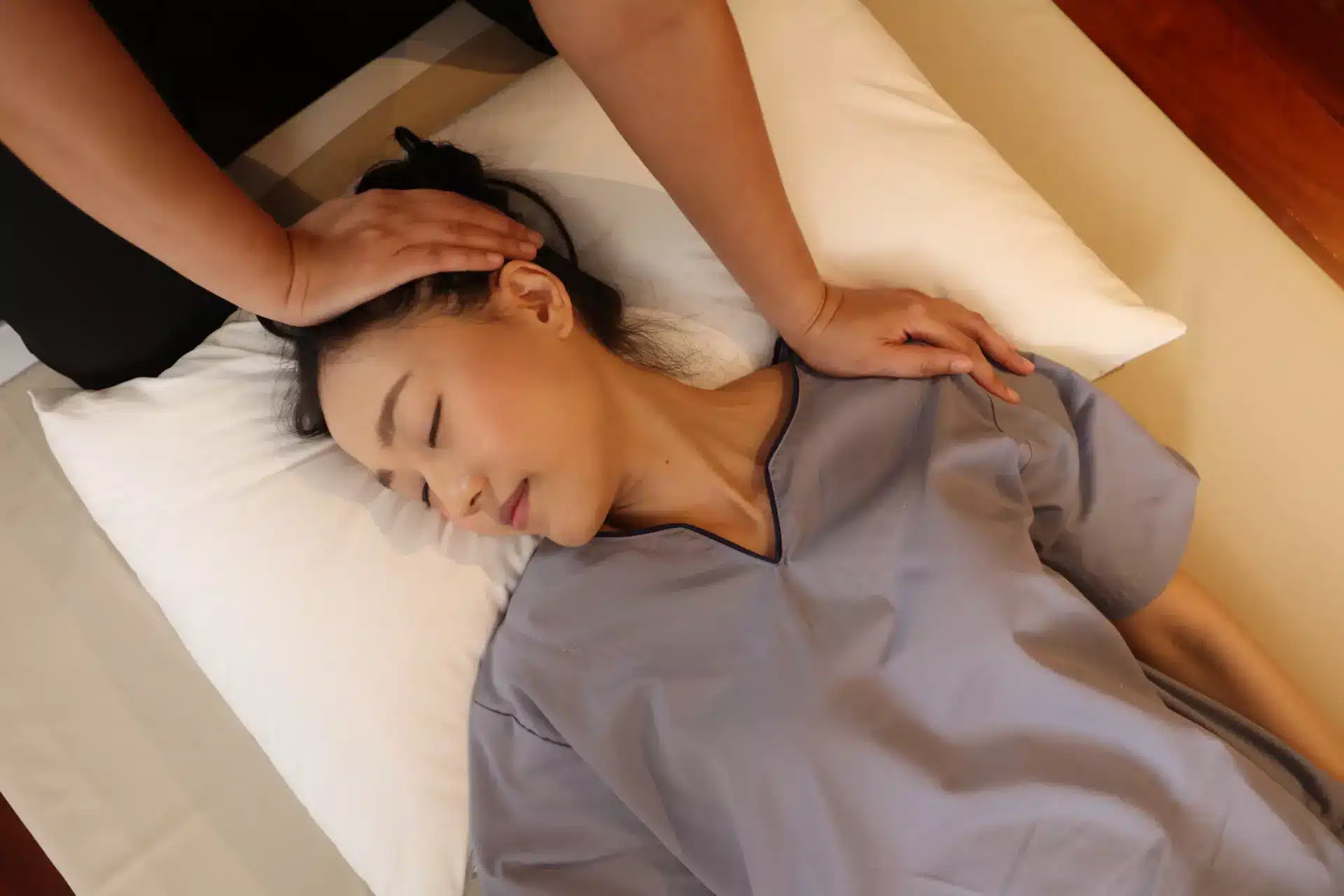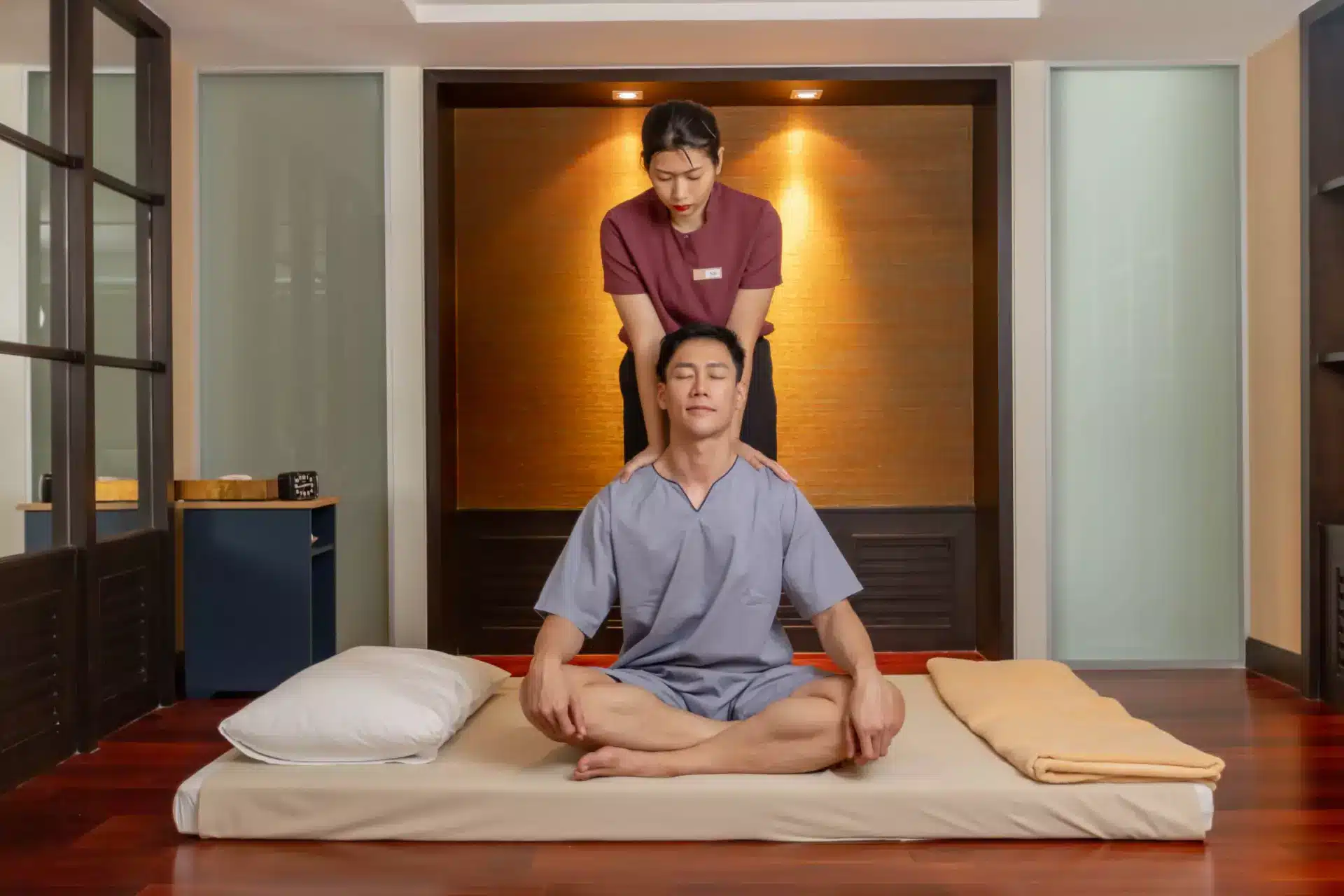
A Comprehensive Guide to Deep-Tissue Massage
In holistic wellness, a deep-tissue massage is a powerful therapeutic method that delves into the many layers of muscle to alleviate tension and promote better healing and flexibility. This article embarks on a journey to unravel the wonders of deep-tissue massage, with a spotlight on its variants such as Bangkok sports massage, and therapeutic massages.
Understanding Deep-Tissue Massage
Deep-tissue massage is a specialized technique that focuses on reaching deeper layers of muscles and connective tissue. Unlike traditional massages, a deep-tissue massage involves applying firm pressure and slow strokes to target specific areas of tension. This method is quite effective in releasing chronic muscle tension and restoring natural movement to the body.
Benefits of Deep-Tissue Massage
Beyond its immediate relaxing effects, deep-tissue massages offer various health benefits, such as enhancing blood circulation, reducing inflammation, and helping muscles recover from injuries. Athletes and fitness enthusiasts can find solace in the healing powers of a deep-tissue massage, which is also an essential component of sports massages in Bangkok. A deep-tissue massage’s healing benefits can be summarized below:
- Pain Relief: Targets chronic pain and discomfort.
- Improved Mobility: Enhances flexibility and range of motion.
- Stress Reduction: Alleviates both physical and mental stress.
Key Techniques
Stripping, friction, trigger point therapy, and myofascial release form the arsenal of a skilled deep-tissue massage therapist at Heavena Wellness and Spa. Each method has a specific purpose, contributing to the overall effectiveness of the massage. Read on as we explore what deep-tissue massages are all about.
What is the Scientific Basis of Deep-Tissue Massages?
The effectiveness of deep-tissue massages is scientifically supported, particularly in how it affects muscle tension, adhesions, and overall physical well-being. We will examine how deep-tissue massage brings about positive changes in the body.
How Does Deep-Tissue Massage Differ from Swedish Massage?
Thai massage and Swedish massage are both popular massage techniques, but there are some key differences between the two.
Thai Traditional Massage
Thai massage is a traditional Asian massage technique that has been practiced for centuries. It is a more dynamic and invigorating massage than Swedish massage, and it incorporates elements of yoga and stretching. Thai massage therapists use their hands, elbows, knees, and feet to apply pressure to the body and stretch the muscles.
Swedish Massage
Swedish massage is a Western massage technique that focuses on relaxation and stress relief. It is a gentler massage than a Thai massage, and it uses long, smooth strokes to release tension in the muscles. Swedish massage therapists also use a variety of other techniques, such as kneading, tapping, and percussion
The Symbiosis of Sports Massage and Deep-Tissue Massage
In the heart of Bangkok, sports massage takes on a whole new dimension. This specialized massage caters to the unique needs of athletes, promoting flexibility, preventing injuries, and expediting recovery. Deep-tissue massages focus on reaching underlying muscle layers and seamlessly integrate into the realm of sports massage.
Tailored for Athletes
Athletes who go to Bangkok and get a sports massage believe in the efficacy of deep-tissue massage techniques. These address the specific muscle strains and stressors that athletes must endure. Whether it’s pre-event preparation or post-competition recovery, the symbiotic relationship between deep-tissue massage and sports massage is quite evident in the enhanced performance and reduced risk of injuries for athletes.
The Allure of Therapeutic Massage in Bangkok
A Haven for Healing
Bangkok, with its eclectic blend of tradition and modernity, has become a haven for therapeutic massage. Rooted in ancient healing practices, therapeutic massage transcends the physical, delving into the realms of mental and emotional well-being. In the fast-paced urban landscape of Bangkok, therapeutic massage emerges as a balm for the soul, offering respite from the demands of contemporary life.
Therapeutic Massages: Beyond the Physical
Therapeutic massage addresses not only physical ailments but also mental stress and emotional imbalances. Deep massage, as a key player in the therapeutic spectrum, plays a crucial role in unlocking the body’s innate ability to heal and restore balance.
FAQs about Deep-Tissue Massage
1. What Does a Deep-Tissue Massage Do?
A deep-tissue massage is a type of massage therapy that focuses on the deep layers of muscle and tissue. It uses firm pressure and slow strokes to break up muscle knots and adhesions and to release tension in the muscles. Deep tissue massages help improve blood circulation, reduce pain, and increase your body’s range of motion.
2. What is the Difference Between Full-Body Massage and Deep-Tissue Massage?
A full body massage typically involves massaging all of the major muscle groups in the body. It can be used for relaxation, stress relief, and pain management. A deep massage is a more focused type of massage that targets specific areas of muscle tension and pain. It is often used to treat chronic pain conditions, such as back pain, neck pain, and headaches.
3. What is a Thai Deep-Tissue Massage?
Thai deep massage is a type of Thai massage that uses firm pressure and slow strokes to massage the deep layers of muscle and tissue. It is similar to deep massage, but it also incorporates elements of yoga and stretching. Thai deep massage can help to improve flexibility, reduce pain, and increase range of motion
4. Why Does Deep-Tissue Massage Feel So Good?
Deep-tissue massages relieve tension in the body and increase blood circulation. When the muscles are tense, they can restrict blood flow and cause pain. Deep-tissue massages help to break up muscle knots and adhesions, which allows blood to flow more freely to the muscles. This can help to reduce pain and improve muscle function. Additionally, deep massage can help to release endorphins, which are hormones that have mood-boosting and pain-relieving effects.
5. Who Should Not Get a Deep-Tissue Massage?
People with the following conditions shouldn’t get a deep-tissue massage:
- Open wounds or sores
- Deep vein thrombosis or blood clots
- Cancer
- Osteoporosis
- Arthritis
- Infections
- High blood pressure
- Heart disease
Pregnant women should also talk to their doctor before getting a deep massage
6. Are Deep-Tissue Massages Good or Bad?
Deep massage is generally considered to be safe and effective. However, it is important to find a qualified massage therapist who is experienced in deep massage. If you have any health concerns, be sure to talk to your doctor before getting a deep-tissue massage.
7. Should I Get a Deep-Tissue Massage or a Relaxing Massage?
Whether you should get a deep-tissue massage or a relaxing massage depends on your individual needs. If you are looking for a massage to help relieve muscle tension and pain, a deep-tissue massage might be for you. If you are looking for a massage to help relax and de-stress, a relaxing massage could be the better option.
8. Is Deep-Tissue Massage Better Than Stretching?
Deep-tissue massage and stretching are both effective ways to improve flexibility and reduce muscle pain. However, they work in different ways. Thailand’s deep-tissue massages use firm pressure to break up the knots of muscles and adhesions. Stretching on the other hand lengthens the muscles. For best results, it is recommended to combine deep-tissue massage with stretching.
9. How Often Should I Get a Deep-Tissue Massage?
How often you should get a deep-tissue massage depends on your individual needs. If you have chronic pain, you may need to get a deep-tissue massage every week or two. If you are only getting a deep massage for relaxation, you may only need to get one every month or two. It is important to listen to your body and get a deep-tissue massage as often as you need to feel your best.
Choosing the Right Therapist
The journey to reaping the benefits of deep-tissue massage begins with choosing the right therapist. Qualifications, certifications, and the ability to tailor the massage to individual needs are key factors in ensuring a positive therapeutic experience. We guide readers through the process of finding a therapist who aligns with their wellness goals.
Conclusion
The healing touch of a deep-tissue massage transcends physical boundaries. From the adrenaline-fueled domain of sports massage to the holistic embrace of therapeutic massage, the city offers a diverse spectrum of wellness experiences. So, embark on a journey of rejuvenation, explore the symbiosis of deep-tissue massage and sports massage, and discover the therapeutic haven that is Bangkok.







